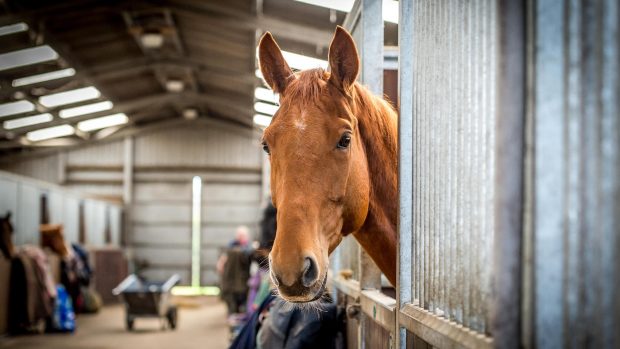More articles on diagnostic techniques
Find an equine vet
What is ultrasound and how does it work?
Roger Smith MRCVS, professor of equine orthopaedics at the Royal Veterinary College, explains: “Ultrasound imaging uses the principles of sonar developed for ships at sea.
“As sound passes through the body, it produces echoes that can identify the distance, size and shape of objects.
“Attached to a box of electronics is a probe [or transducer], which is made of tiny crystals.
“Sound waves leave the transducer and enter the body, where they reflect off the bone and soft tissue to produce an echo that is analysed by a computer in the ultrasound machine and transformed into moving pictures of the organ or tissue that is being examined.
“Bone, which is dense, is identified on screen as a bright line, whereas a tendon appears as a dotted pattern.”
What do vets use ultrasound for?
Examining soft tissue, particularly tendons and ligaments, but also many other structures including joints and even eyes.
Advantages of ultrasound
• Ultrasound images are real-time, so unlike X-rays, where you can only see a static image, with ultrasound movement can be seen
• Doppler ultrasound, which is a relatively new technology, can measure the speed of blood flow in soft tissues, allowing a vet to determine the extent of injury
Disadvantages of ultrasound
• Ultrasound cannot be used to examine the deeper structures in bone as bone matter is too dense
• Problems can arise when ultrasound is used to look at curved tendons and ligaments because if the surface is not parallel to the ultrasound, the sonic beam will be reflected elsewhere
How much does ultrasound cost?
An average ultrasound scan will cost around £160.
This extract is from an article on diagnostic techniques first published in Horse & Hound (15 April, 10)
Looking for more articles on diagnostic techniques?
Find an equine vet near you



